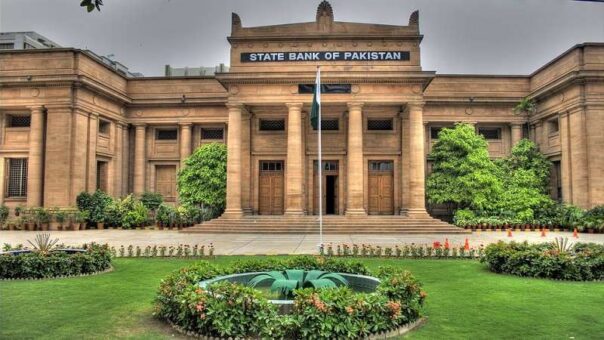Karachi, March 12, 2024 – Recent data released by the State Bank of Pakistan (SBP) on Tuesday reveals a staggering 104 percent surge in government bank borrowing, reaching Rs 4.13 trillion during the first eight months (July – February) of the fiscal year.
This marks a significant increase from Rs 2.02 trillion recorded during the corresponding period of the previous fiscal year.
The government’s borrowing from the banking system primarily involves the sale of commercial papers, a mechanism employed to bridge the budget deficit. While this strategy helps in financing essential expenditures, analysts are expressing reservations about the potential challenges it could pose for the new government in the future.
One key concern highlighted by analysts is the impact of this increased borrowing on the government’s financial burden, especially with the prevailing high-interest rates. The benchmark policy rate of the SBP currently stands at 22 percent, making the cost of borrowing a significant consideration for the government.
Notably, the government has already surpassed the borrowing level of Rs 3.72 trillion recorded in the entire fiscal year 2022-23 within just eight months of the fiscal year 2023-24. This rapid increase in borrowing raises questions about fiscal management and sustainability, especially in the context of rising interest rates and potential economic challenges.
The substantial reliance on borrowing by the government has broader implications, affecting the availability of resources for credit to the private sector. Banks extended loans amounting to Rs 180.66 billion to the private sector during the first eight months of the current fiscal year, reflecting a significant decline from the Rs 393 billion extended in the same period of the previous fiscal year.
This decline in private sector credit is a cause for concern as it impacts businesses and individuals seeking financing for various purposes, including investments, expansions, and working capital. The government’s dominance in the credit market may limit the financial flexibility of private enterprises, potentially affecting economic growth and job creation.
As the government continues to grapple with fiscal challenges, balancing the need for financing with the potential repercussions on interest rates and private sector credit becomes a critical task. The impact of these borrowing trends on the overall economic landscape will be closely monitored by economists, policymakers, and market participants alike, as they navigate the complexities of fiscal policy and economic sustainability in the coming months.
